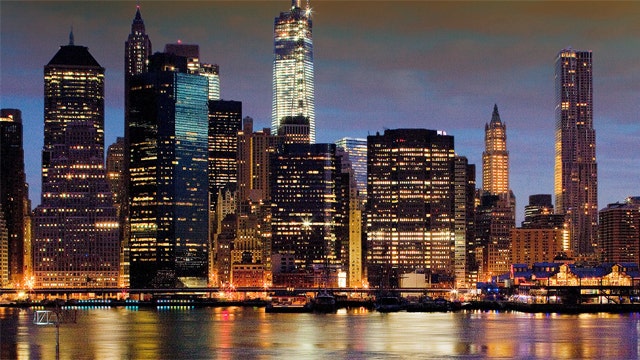Homicide rates in big cities are skyrocketing, in a tragic trend that has reversed a years-long decline – and comes amid a raging debate over how to police America’s cities and suburbs.
This year in Milwaukee, murders are up 21 percent from a year ago. In Baltimore, they’re up 56 percent. Washington, D.C, has seen a 43.8 percent spike in homicides so far, and New York has seen a 9.5 percent jump.
Each city has unique characteristics and circumstances which may have helped spur their respective spikes. But there are unmistakable commonalities, too. "Police are second-guessing themselves in interacting in high-crime neighborhoods because they're worried about getting caught on a cell phone using force against someone resisting arrest," Heather Mac Donald, with the Manhattan Institute, told Fox News after an especially violent Fourth of July weekend in Chicago.
Indeed, both police and the communities they serve are on edge in the aftermath of killings by officers -- and subsequent rioting -- in Ferguson, Mo., and Baltimore, Md.
There’s an abundance of anecdotal evidence to suggest police have pulled back on pro-active enforcement in cities across America. "When the cops feel that the political establishment does not have their back, they tend to work to rule. That's what happened in Baltimore. We'll respond to 911, we'll respond to a crime, but as far as normal calls in dangerous neighborhoods ... we're just going to be careful," said former Maryland Gov. Bob Ehrlich.
Ehrlich praises the technique of "broken windows” policing in New York, as practiced under former Mayor Rudy Giuliani, but acknowledges some city leaders have taken it too far. "Giuliani broken windows policing worked in New York City, without a doubt. Then you have at a lower level, zero tolerance, and I think sometimes people get confused with the two,” Ehrlich said. “Zero tolerance creates a lot of resentment in the community. In Baltimore you had beyond zero tolerance, you had mass arrests."
Ehrlich's observation is illustrated by the debate now raging mostly between left and right over whether it is overly aggressive policing or too-lax enforcement that has led to the present escalation in murder and other crimes. Each side has its array of YouTube, body camera and cell phone videos to support its case. "We are in a very interesting time at the moment where police are being vilified, sometimes justifiably based [on] some of the videos we see, oftentimes not," New York Police Commissioner William Bratton said on MSNBC Tuesday.
Inner city resentment against aggressive policing had its origin in zero-tolerance, anti-drug enforcement dating back to the Reagan administration. As the inner city crack-cocaine epidemic was raging and stiff sentences were meted out under mandatory sentencing laws, many black Americans took umbrage at what they perceived to be the double standard of more lenient sentencing for powdered cocaine users in largely white communities.
In that era, noted free market conservative economist Milton Friedman argued for legalizing drugs. Asked in a 1991 interview what legalization's effects would be, he said, "I see America with half the number of prisons, half the number of prisoners, ten-thousand fewer homicides a year, inner cities in which there's a chance for these poor people to live without being afraid for their lives ... the same thing happened under prohibition of alcohol as is happening now."
Friedman said that from a strictly economic point of view, the law of supply and demand ensured the drug war could never be won. He even saw government as complicit in the perpetuating the war. He believed that with legalization, disputes would be settled, not with guns, but with contracts and lawsuits. "The violence is due to prohibition and nothing else," he said.
That view seems to ring true for many inner city residents, who've seen an increasing militarization of police equipment and tactics used in the war on drugs. Yet many conservatives reject Friedman's view, and point to the nearly exclusive Democratic Party rule in the very cities now ravaged by drug violence and escalating murder. The violence, they maintain, is not the exclusive result of the drug war, either.
Fatherlessness and the matriarchal structure of inner city homes has increased dramatically since Daniel Patrick Moynihan first warned of it in the early 1960s. Numerous studies have shown a link between violence in young men, low achievement and fatherlessness.
In addition, high youth unemployment rates, the loss of the manufacturing base, and a cycle of government dependence further perpetuates the dysfunction, they say.





















